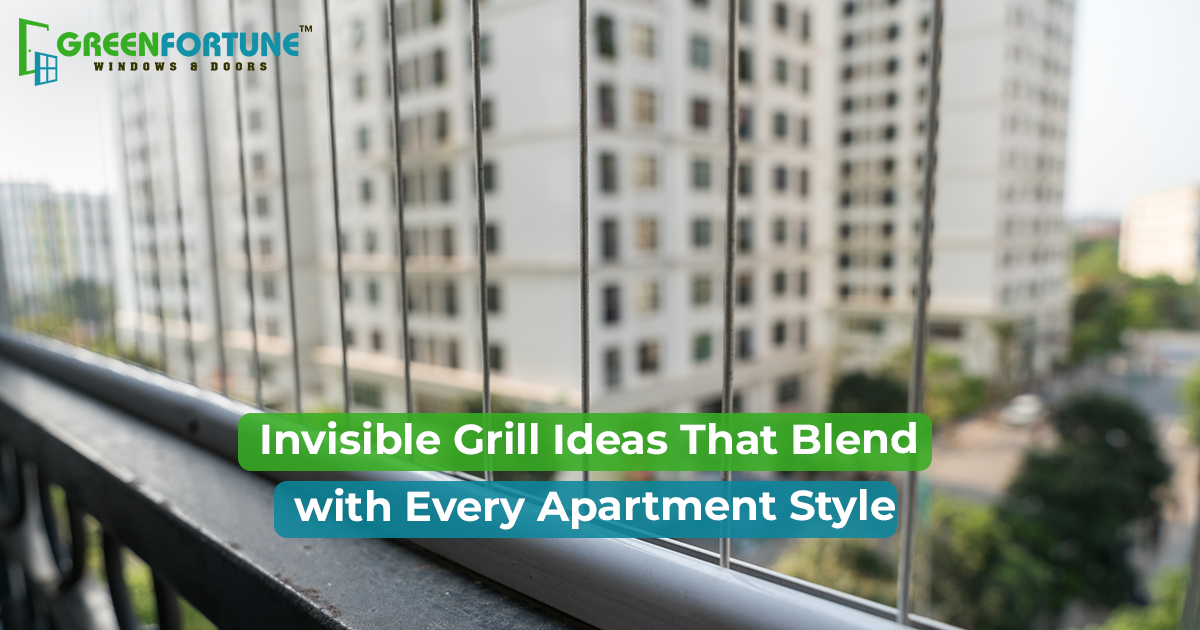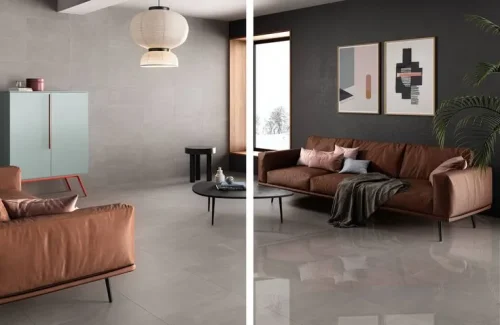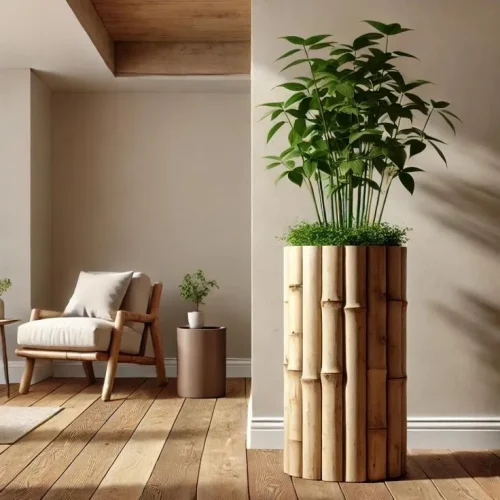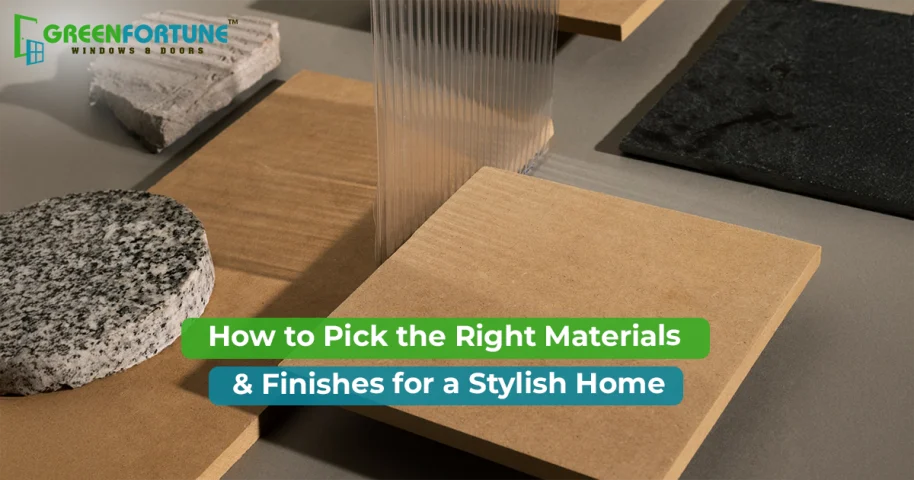
How to Choose an Interior Designer in India
August 19, 2025
Top Invisible Grill Designs for Modern Indian Apartments
August 20, 2025When you look at a bare room, do you feel excited or overwhelmed? For some interior designers, a blank space sparks endless creativity. For others, especially those just starting out, it can feel daunting to face so many material choices.
Materials and finishes are not just decorative touches. They define how a space looks, feels, and functions. This guide will walk you through the basics of selecting materials, highlight commonly used options, and share 15 expert tips to help you choose the best materials and finishes for interiors.
Table of contents
- Why Materials Matter in Interior Design
- Common Materials Used in Interior Design
- Which finishes are easiest to clean?
- Are sustainable materials a good idea?
- Can I mix matte and gloss finishes in the same room?
- What’s the difference between low-cost and premium materials?
- Final thoughts: How do I really know what’s best?
- Looking to upgrade your space with doors and windows that last?
- FAQs
Why Materials Matter in Interior Design
Before paint colours and furniture selections come into play, designers must think about layout, flow, and focal points. But it’s the choice of materials, also known as “finishes”, that truly shapes the end result.
Materials bring structure, texture, warmth, and style to any room. Whether it’s sleek marble countertops or rustic wooden beams, finishes help turn a design idea into a livable, functional space. The right materials also ensure the home meets the client’s needs, budget, and lifestyle.
Common Materials Used in Interior Design
Here’s a look at some materials frequently used in modern interiors:
- Granite: Durable and beautiful, granite is popular for countertops and backsplashes. Polished granite suits kitchens and bathrooms, while unpolished varieties can be used decoratively.
- Wood: From floors to ceilings, wood is incredibly versatile. It suits nearly every style and budget.
- Copper: Though pricey, copper accents, like drawer pulls or range hoods, add elegance and warmth. Even copper-toned materials can achieve a similar effect.
- Fabrics: Cotton, silk, wool, suede, and more are key for soft furnishings and add comfort to any space.
- Renewable Materials: Options like bamboo, hemp, cork, and reclaimed wood are eco-friendly choices with unique textures and looks.
- Tile: Used mainly in bathrooms and kitchens, ceramic tile is low-maintenance and works well with many styles.
- Synthetic Materials: Vinyl and laminate mimic the look of more expensive materials but are budget-friendly and easy to install.
Which finishes are easiest to clean?

This is one of the most common concerns people have, and for good reason. Some finishes look beautiful but attract fingerprints, dust, or stains very easily.
Glossy finishes like high-gloss laminates or acrylics can show fingerprints and scratches more than matte ones. But they are also easier to wipe clean.
Matte finishes, on the other hand, may hide dust better but are sometimes tougher to scrub if a stain sets in.
When thinking about the best materials and finishes for interiors in kitchens or bathrooms, always choose wipeable and stain-resistant ones.
Are sustainable materials a good idea?

Yes, if you choose carefully. People are becoming more conscious about using sustainable interior materials, but it’s important to know what that really means.
Bamboo, recycled wood, low-VOC paints, cork, and terracotta are popular eco-friendly options. They’re safe for health, good for the environment, and often more breathable than synthetic materials.
But not all “green” tags mean the product is fully sustainable. Always ask the seller or contractor where it’s sourced from. For interiors, a mix of both natural and low-impact manmade materials can often be the best route.
Can I mix matte and gloss finishes in the same room?
Yes, and it actually works really well when done right. A matte wall with a glossy cabinet, or a textured backsplash with plain counters, adds contrast and makes the space feel balanced.
The trick is not to go overboard. If everything is matte, the room may look too dull. If everything is glossy, it might reflect too much light or feel sterile.
A little bit of play between soft and shiny finishes is part of any good interior surface finishes guide. Just don’t use more than two or three different finishes in one room unless you really know how to coordinate them.
What’s the difference between low-cost and premium materials?
Sometimes, cheaper doesn’t mean bad; it just means you have to compromise somewhere. Maybe it won't last as long, or maybe it needs more care.
For example, MDF is cheaper than solid wood.
But that doesn’t mean you should always choose the most expensive option. If you're making a decorative cabinet in a corner that’s rarely touched, MDF with a good laminate is fine. But for a kitchen countertop, go for stone or quartz because they deal with heat, water, and daily wear.
When you're choosing the best materials and finishes for interiors, think long-term.
Final thoughts: How do I really know what’s best?
The truth is, there’s no one-size-fits-all answer. The best materials and finishes for interiors will depend on your lifestyle, your taste, your local climate, and how much time you're ready to invest in cleaning or repairs.
What works for your friend’s house may not work for yours. So don’t go by trends or social media pictures alone. Instead, ask the right questions, look at real samples, talk to contractors, and go with your gut. If a finish looks beautiful but seems like a hassle to clean, it’s probably not for you.
And always test a small area before finalising. Whether it's paint, laminate, stone, or tile, looking at a sample in your own lighting and space makes all the difference.
That’s what makes it the best material and finish for your interior.
Looking to upgrade your space with doors and windows that last?
At Green Fortune, we offer premium quality uPVC doors and windows that are weather-resistant, soundproof, and built for everyday comfort. Whether you’re renovating or building fresh, our custom-fit solutions bring modern function and clean aesthetics together. All our products are eco-friendly and low-maintenance, just install and enjoy.
Explore the full range today and give your home the upgrade it deserves.
FAQs
- What is the most durable material for high-use interior spaces?
For high-use areas like kitchens and entryways, stone surfaces like granite or engineered quartz are some of the most durable. They resist heat, stains, and scratches better than most other materials. Solid wood with the right finish also performs well over time. - How can I make sure the materials I choose are pet-friendly?
Go for scratch-resistant surfaces like matte laminates and stain-resistant fabrics like microfiber or leatherette. Avoid high-gloss finishes that show paw marks or delicate materials like untreated wood. Also, choose flooring that doesn't get damaged by water or claws. - Can lighting affect how my interior finishes look?
Yes, lighting can dramatically change how colours and textures appear. Natural light enhances warmer tones, while artificial lights can make surfaces look cooler or more reflective. Always test your finishes under the lighting used in your home before finalising.
best materials and finishes for interiors for Indian homes








